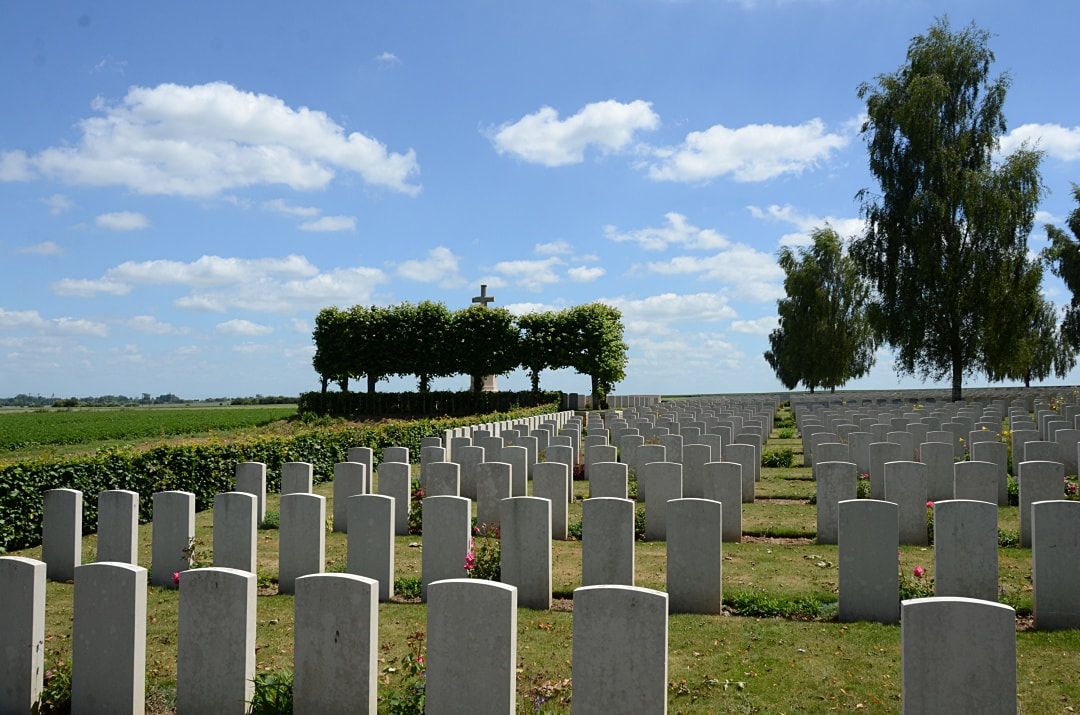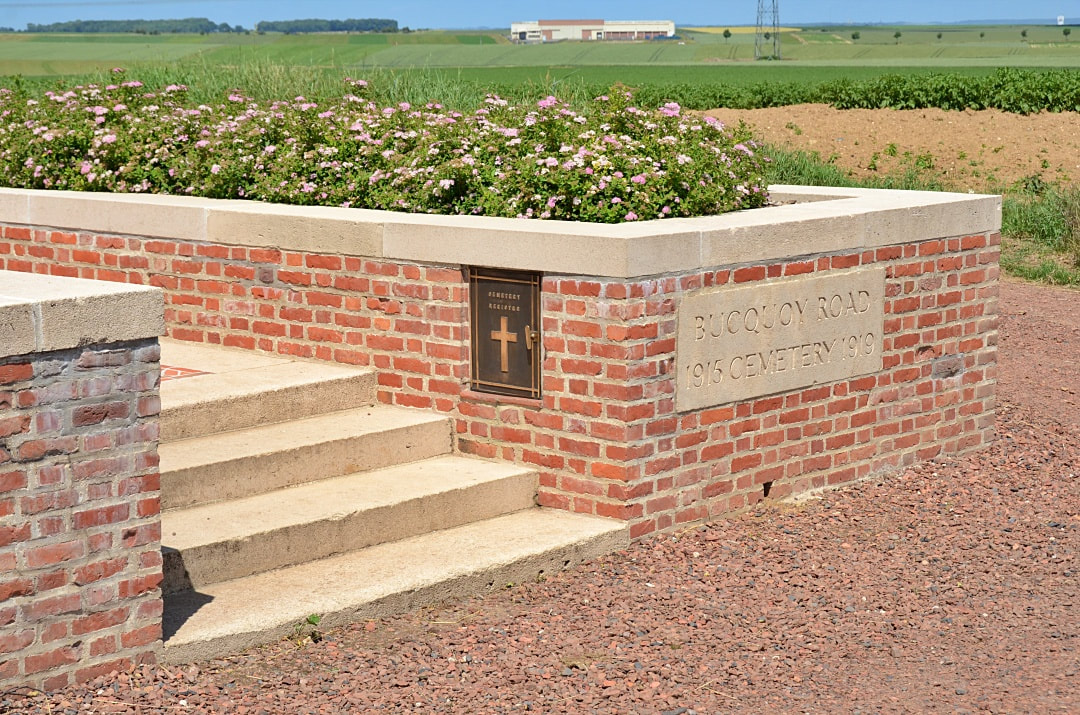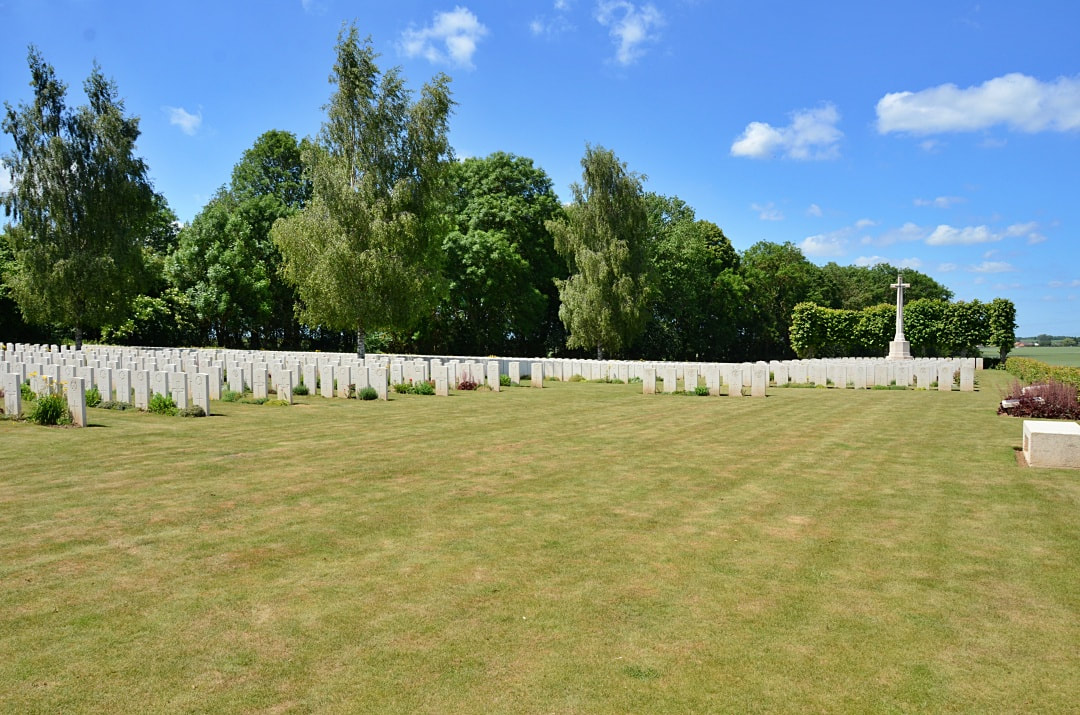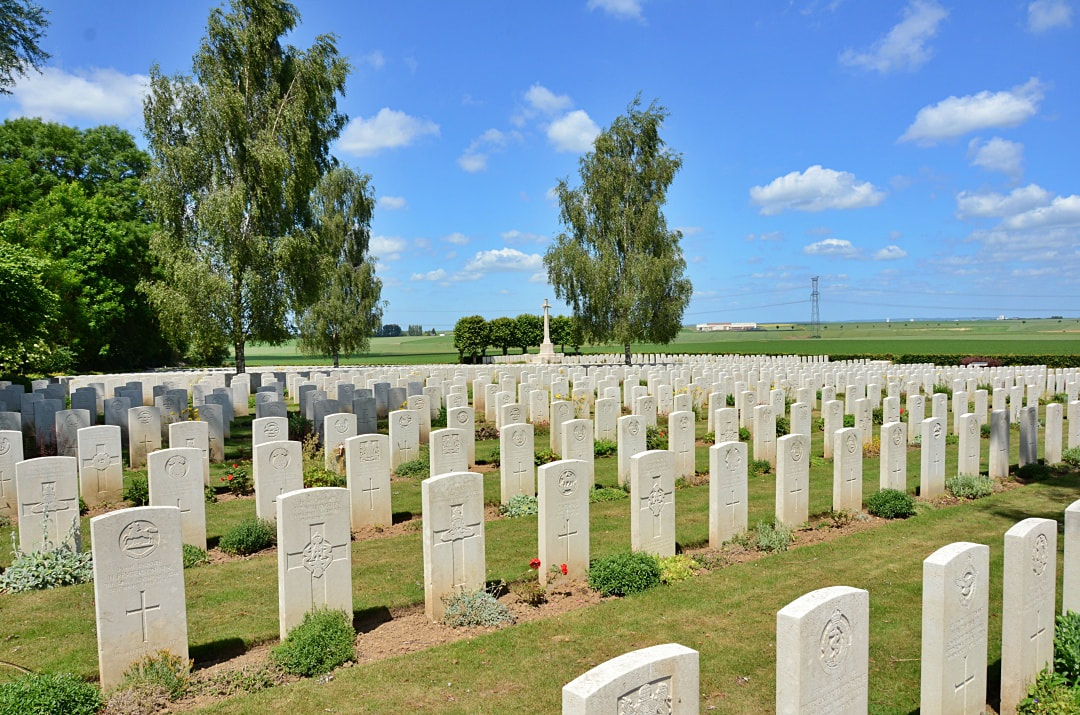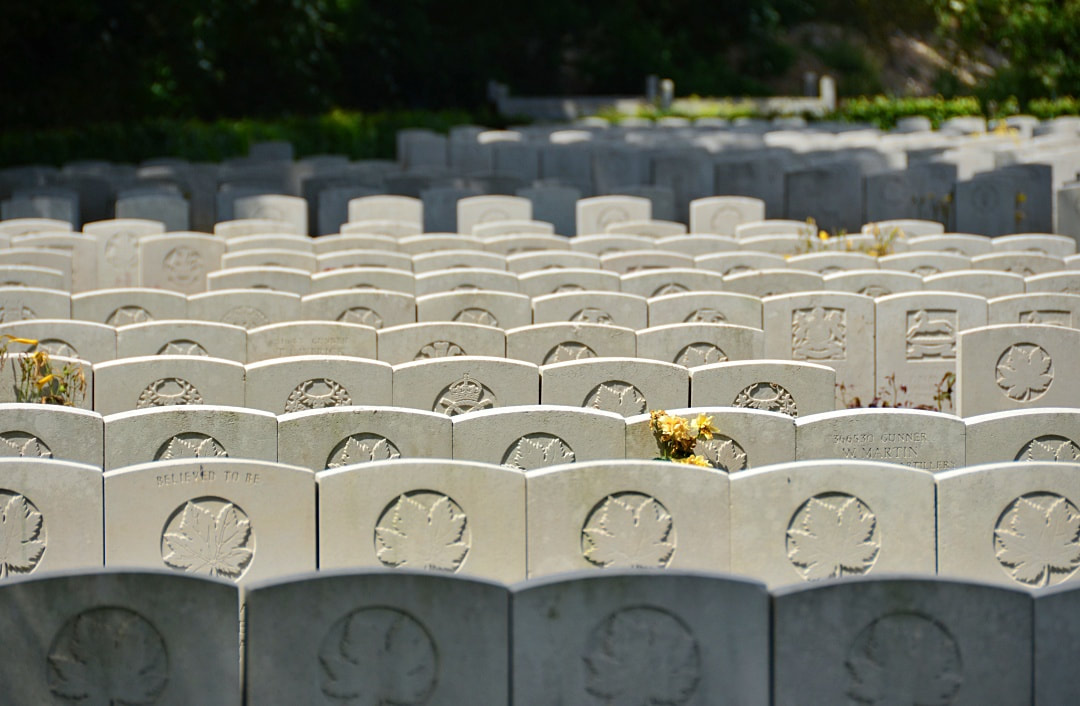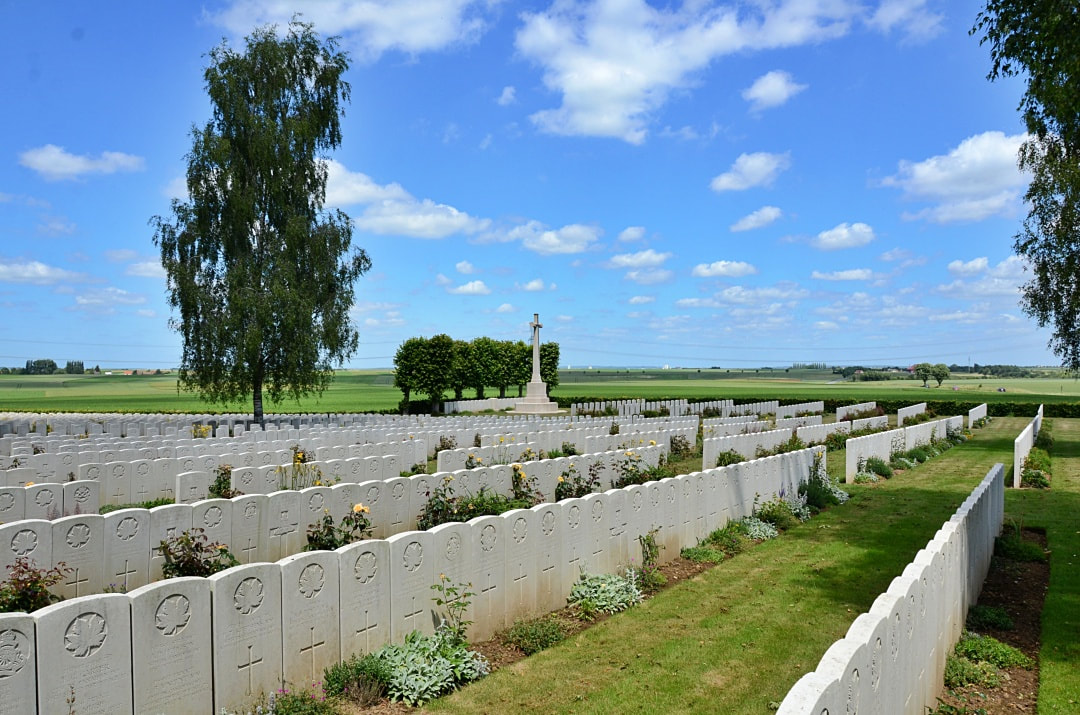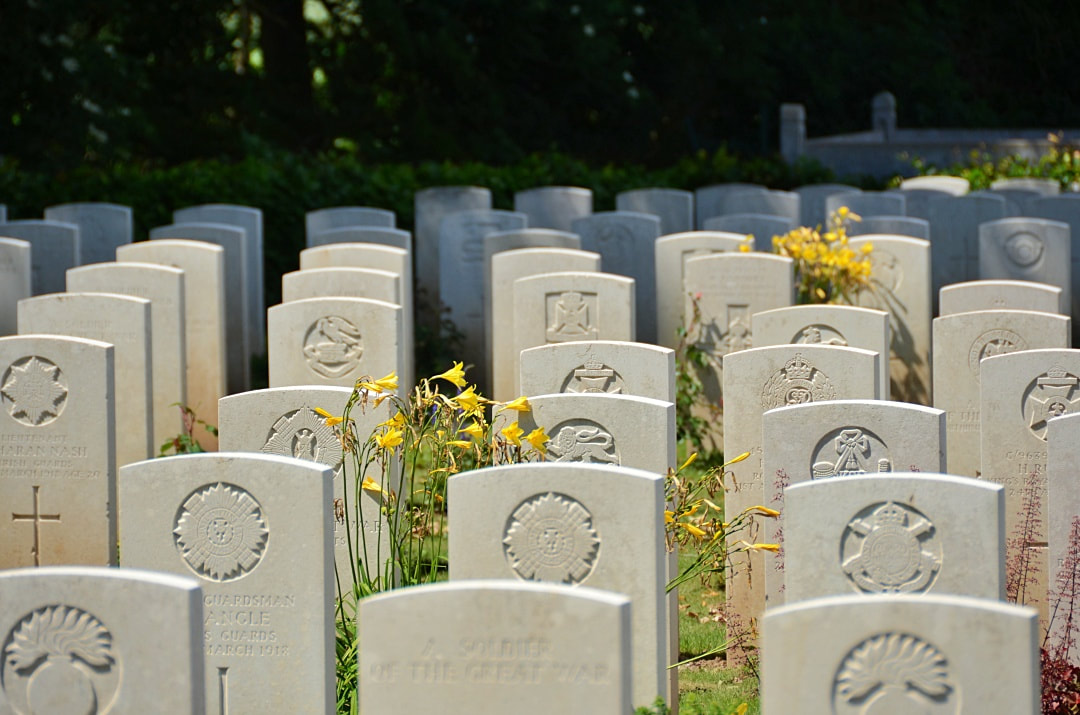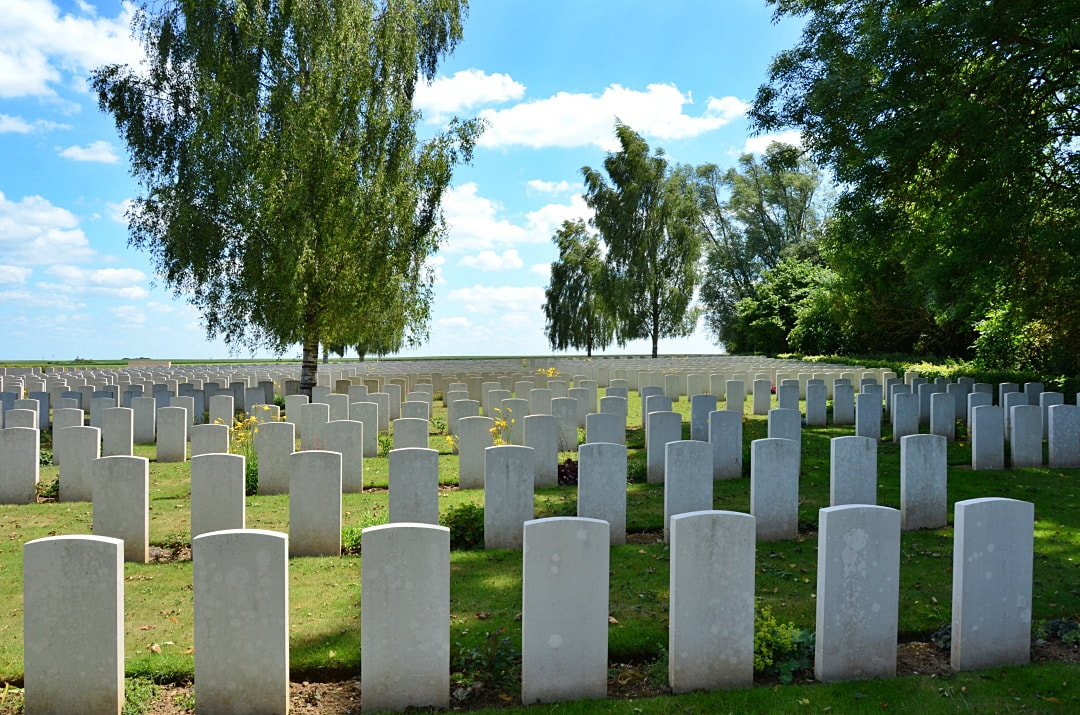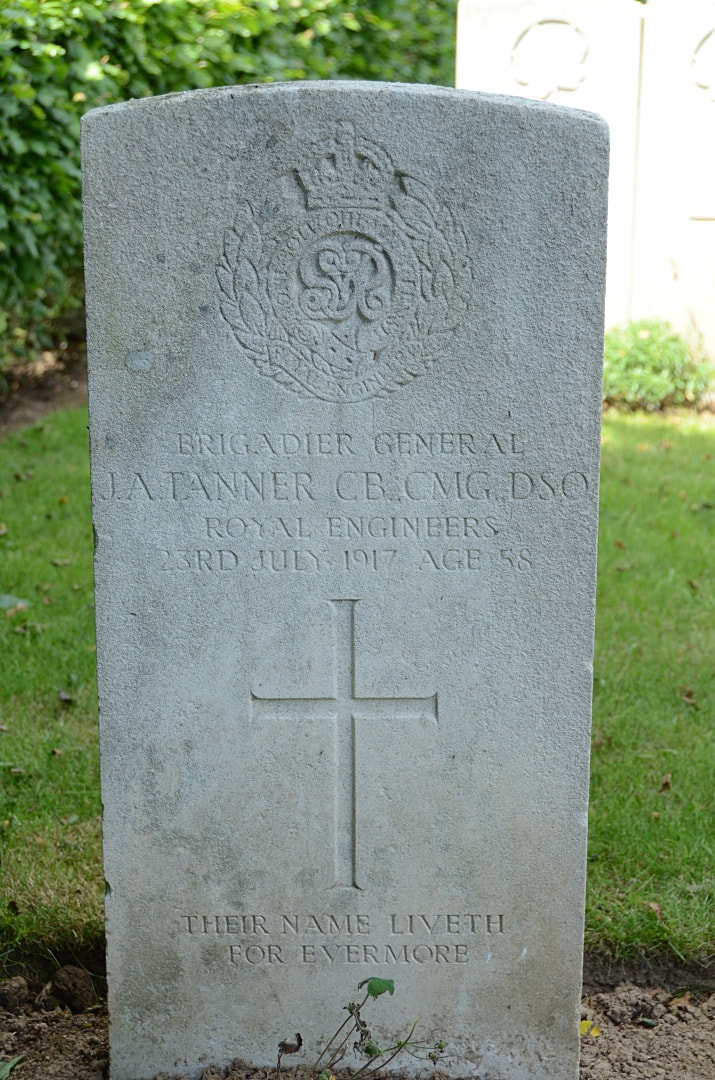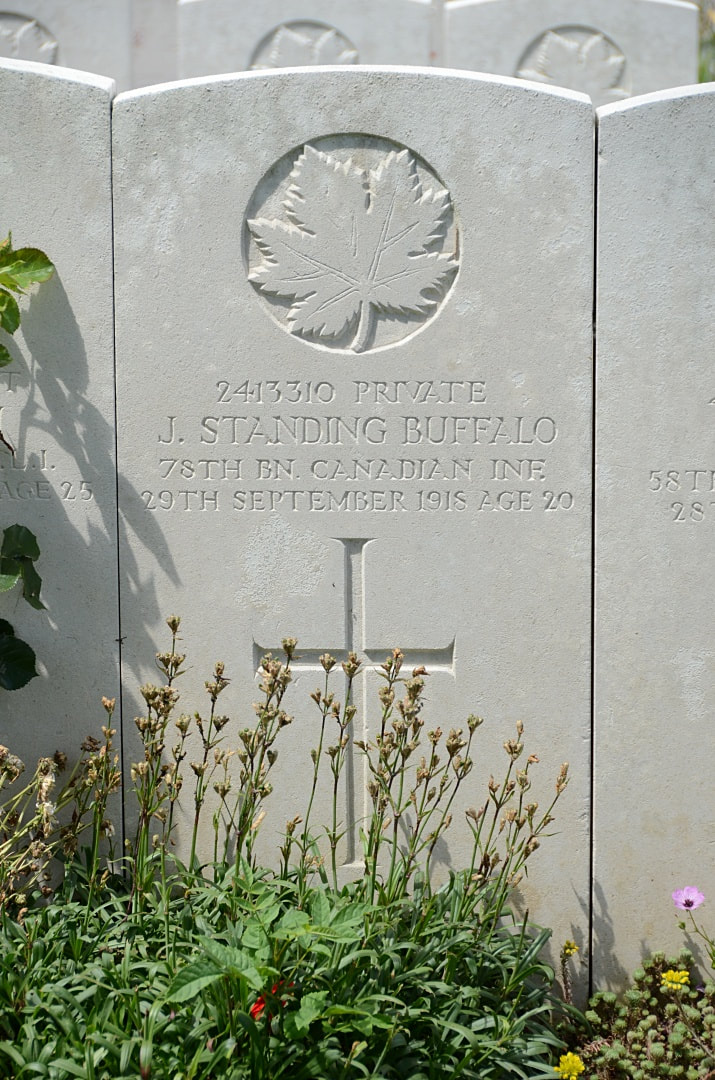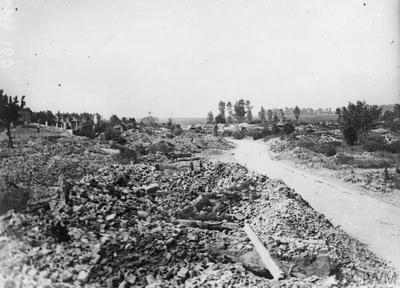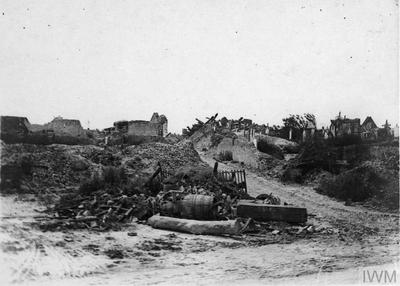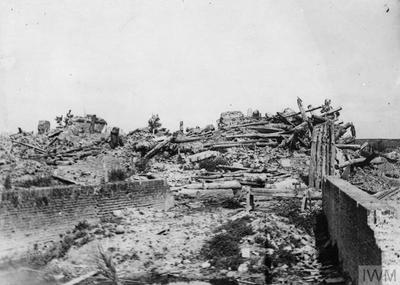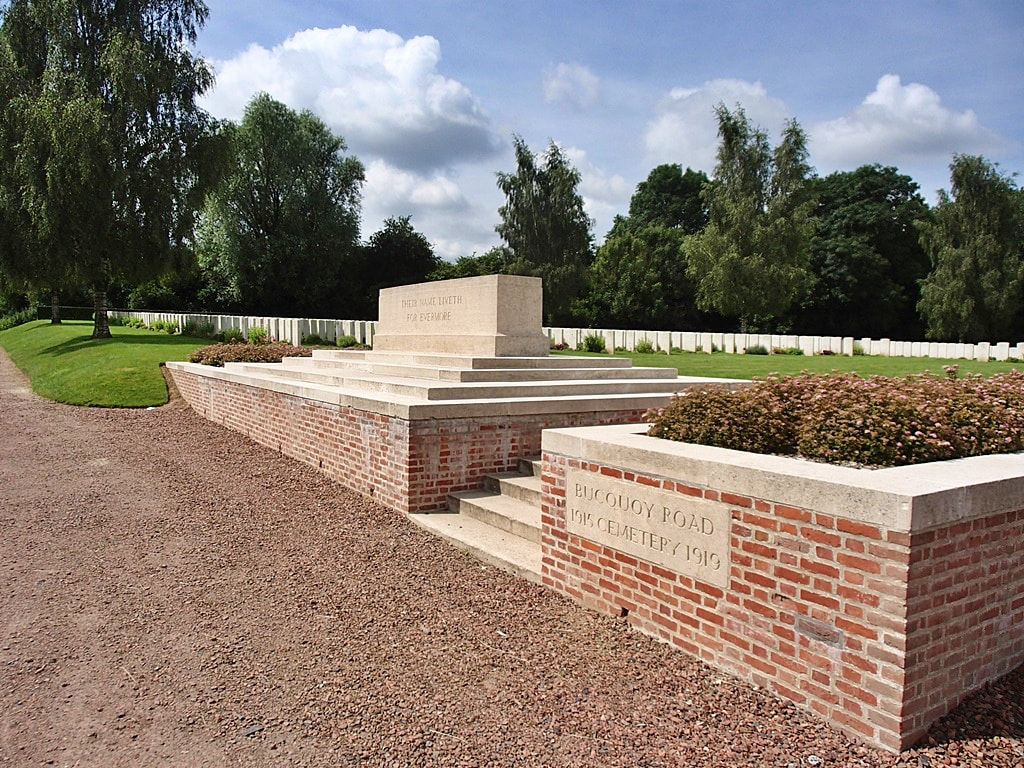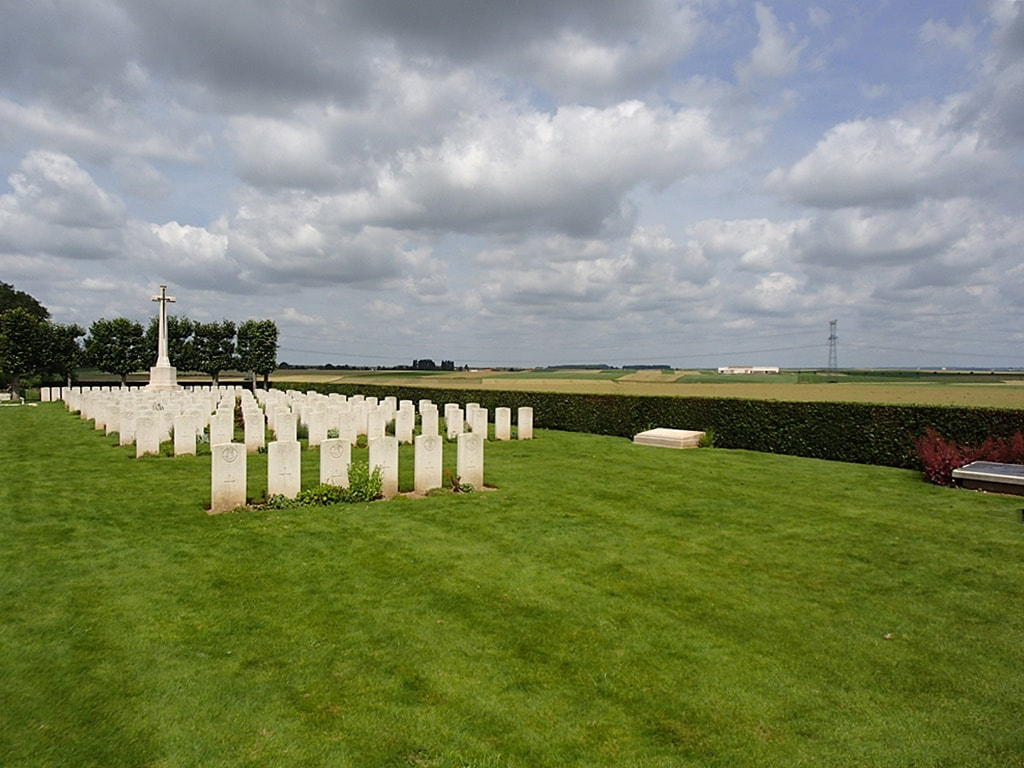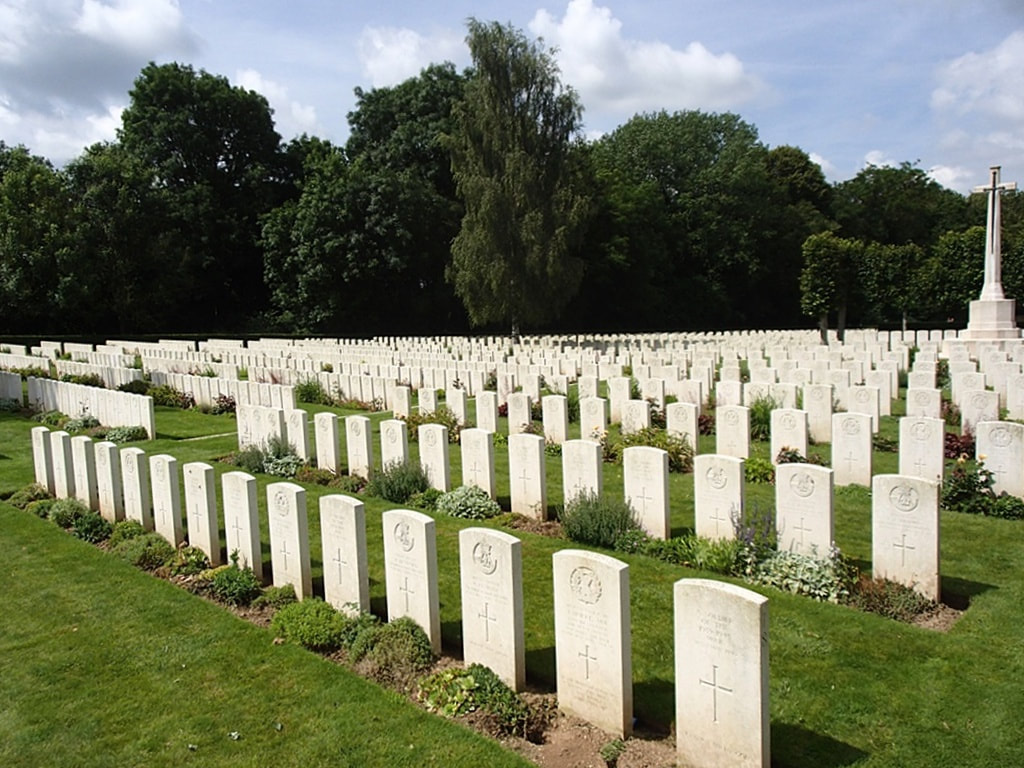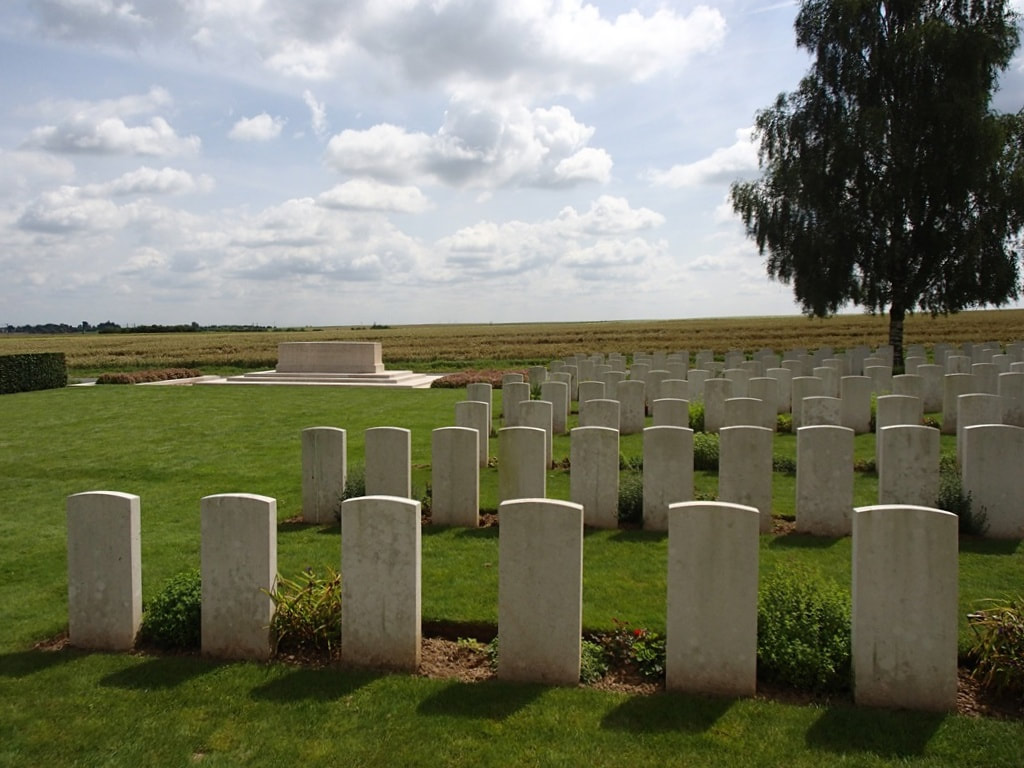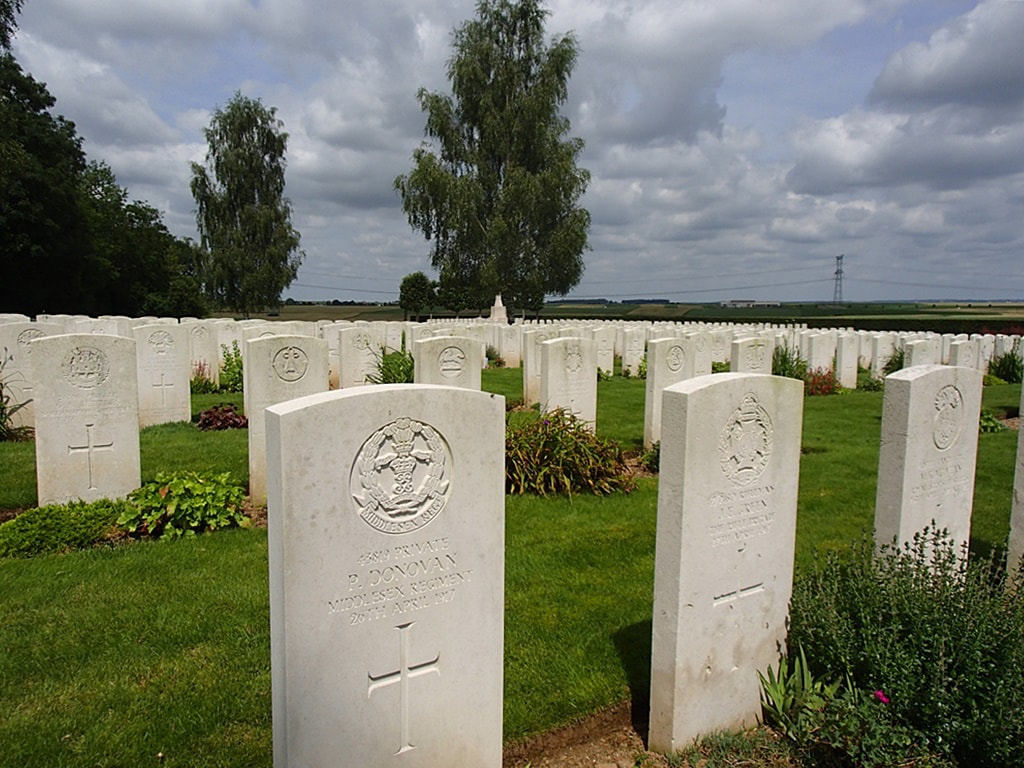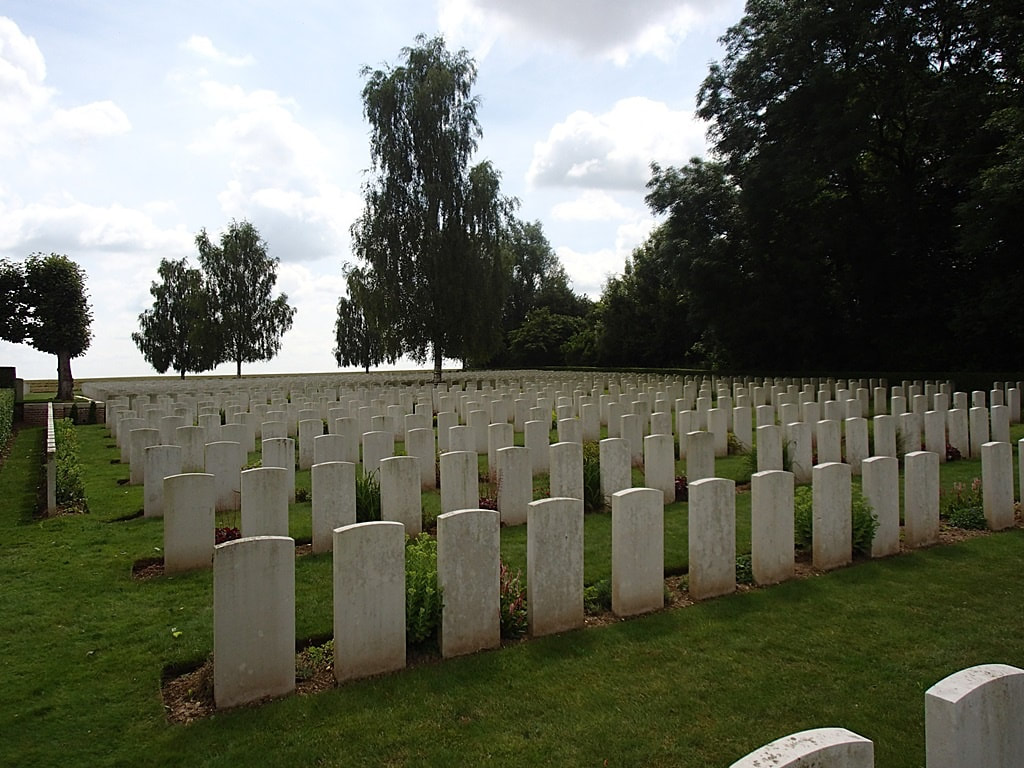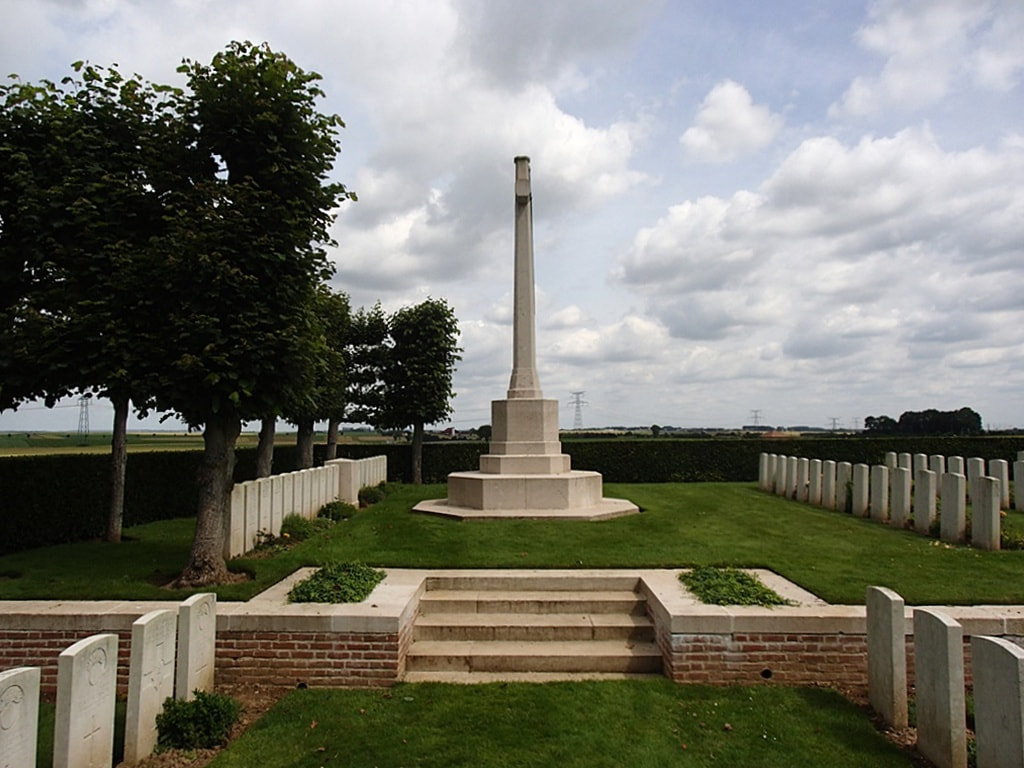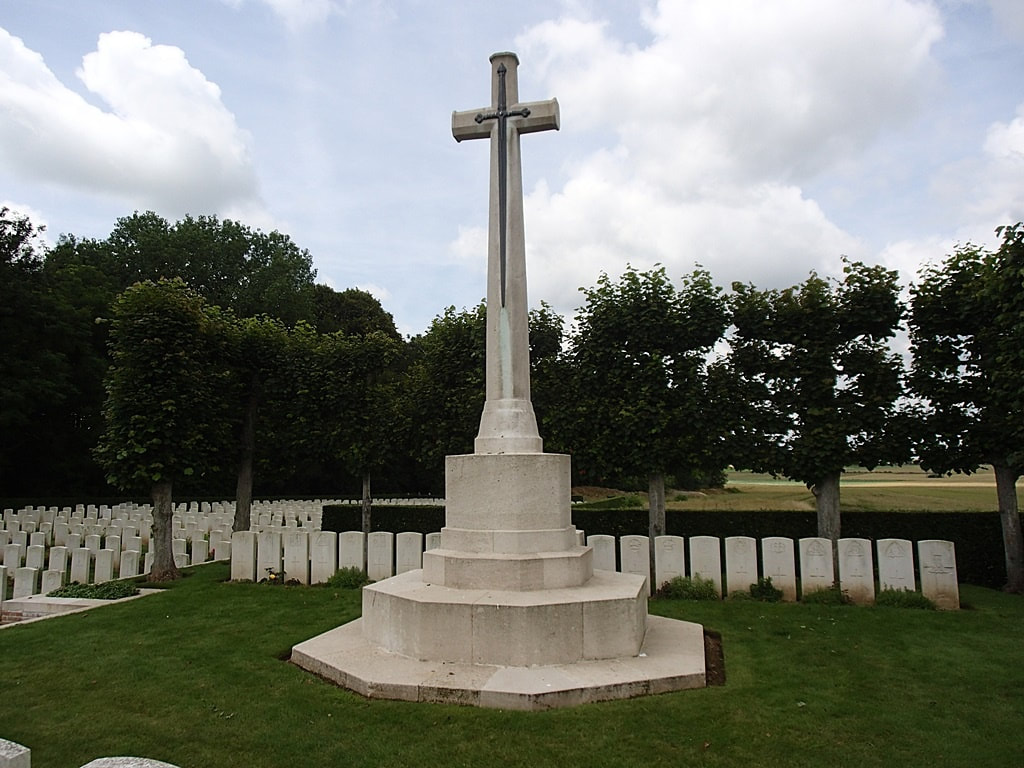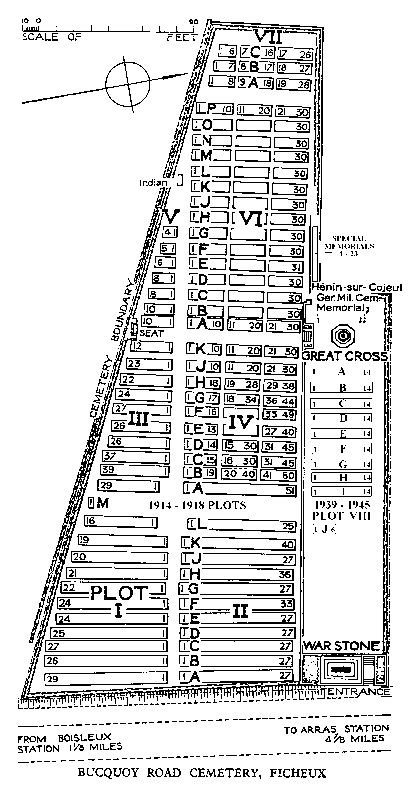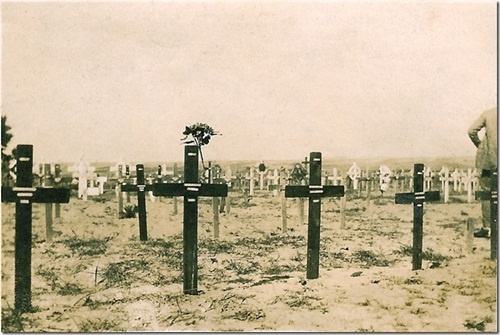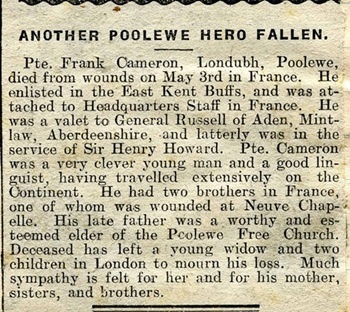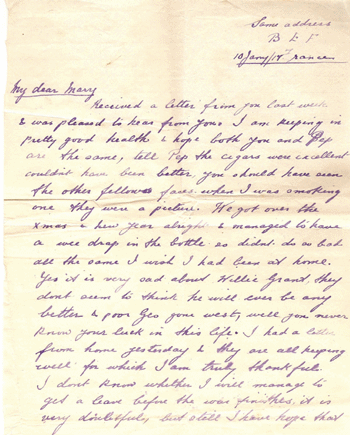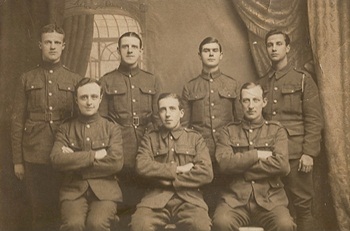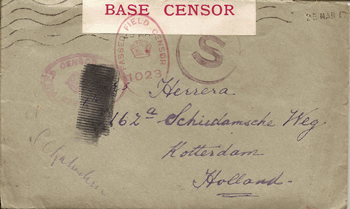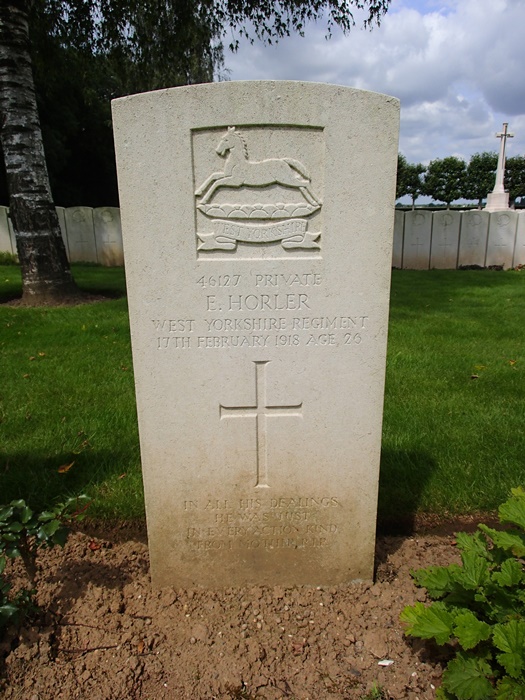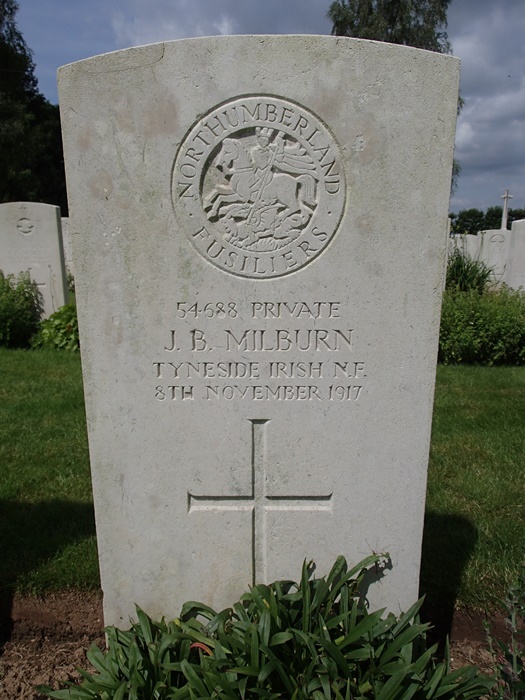BUCQUOY ROAD CEMETERY
Ficheux
Pas De Calais
France
GPS Coordinates Latitude: 50.22215 Longitude: 2.76229
Location Information
Bucquoy Road Cemetery is situated on the D919 heading south from Arras to Ayette. The Cemetery is on the right hand side of the road, 9 kilometres from Arras, just before a crossroads with the D36 between Ficheux and Boisleux-au-Mont.
Visiting Information
Wheelchair access to this site with some difficulty.
Historical Information
In November 1916, the village of Ficheux was behind the German front line, but by April 1917, the German withdrawal had taken the line considerably east of the village and in April and May, the VII Corps Main Dressing Station was posted near for the Battles of Arras. It was followed by the 20th and 43rd Casualty Clearing Stations, which remained at Boisleux-au-Mont until March 1918, and continued to use the Bucquoy Road Cemetery begun by the field ambulances. From early April to early August 1918 the cemetery was not used but in September and October, the 22nd, 30th and 33rd Casualty Clearing Stations came to Boisleux-au-Mont and extended it. By the date of the Armistice, it contained 1,166 burials but was greatly increased when graves were brought in from the surrounding battlefields and from small cemeteries in the neighbourhood.
The more sizeable of the small cemeteries concentrated into Bucquoy Road Cemetery were the following:-.
BOIRY-STE. RICTRUDE BRITISH CEMETERY, on the West side of that village, contained 16 graves of soldiers from the United Kingdom (mainly 56th (London) Division), who fell in March and April, 1917.
BOISLEUX-ST. MARC BRITISH CEMETERY, between Boisleux-st Marc and Boyelles, contained ten graves of soldiers from the United Kingdom (nine of the 2/1st London Regiment) who fell in March and May, 1917.
BOISLEUX-ST. MARC MILITARY CEMETERY (or MERCATEL ROAD CEMETERY), South of Mercatel, contained eleven graves of soldiers from the United Kingdom who fell in March and April, 1917.
CROSS ROADS CEMETERY, BOISLEUX-ST. MARC, a little East of that village, contained 25 graves of soldiers from the United Kingdom (18 of the 1st London Scottish) who fell in August and September, 1918.
BUSHES CEMETERY, BOISLEUX-ST. MARC, a little South of that village, containing 17 graves of soldiers of the 1st Grenadier Guards who fell in March and April, 1918.
HAMELINCOURT BRITISH CEMETERY, between Courcelles and Hamelincourt, contained the graves of eight soldiers of the 3rd Grenadier Guards who fell on the 22nd-24th August, 1918.
HAMELINCOURT COMMUNAL CEMETERY EXTENSION, contained 20 graves of soldiers from the United Kingdom who fell in March, August and September, 1918.
MONCHY-AU-BOIS BRITISH CEMETERY, on the North-East side of that village, contained the graves of 14 soldiers (twelve of the 42nd (East Lancs) Division) who fell in March, 1918.
HENIN-SUR-COJEUL GERMAN CEMETERY, in the South-West quarter of that village, where 28 soldiers from the United Kingdom were buried by their comrades in April and May, 1917.
The cemetery now contains 1,906 burials and commemorations of the First World War. 168 of the burials are unidentified but there are special memorials to 23 casualties known or believed to be buried among them. Other special memorials commemorate 21 casualties buried by their comrades in Henin-sur-Cojeul German Cemetery, whose graves could not be found on concentration.
The cemetery was used again in May 1940 for the burial of troops killed during the German advance. There are 136 burials and commemorations of the Second World War; 26 of the burials are unidentified and special memorials commemorate 39 soldiers whose graves in the cemetery could not be specifically located.
Total Burials: 2,038.
World War One Identified Casualties: United Kingdom 1,285, Canada 447, India 1. Total 1,733.
World War One Unidentified Casualties: United Kingdom 77, Canada 1, Unknown 91. Total 169.
World War Two Identified Casualties: United Kingdom 111.
World War Two Unidentified Casualties: United Kingdom 25.
The cemetery was designed by Sir Edwin Lutyens and George Hartley Goldsmith
Images in gallery below © Johan Pauwels
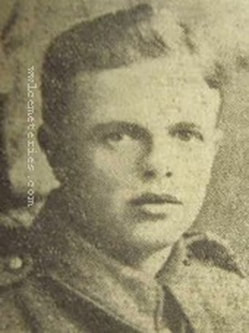
240847 Private
John Robert Burrows
1st/5th Bn. East Lancashire Regiment
28th March 1918, aged 19.
Plot IV. G. 43.
Son of Tom A. and Mary Burrows, of 14, Rochester St., Burnley.
His headstone bears the inscription "He Gave His All"
John Robert Burrows
1st/5th Bn. East Lancashire Regiment
28th March 1918, aged 19.
Plot IV. G. 43.
Son of Tom A. and Mary Burrows, of 14, Rochester St., Burnley.
His headstone bears the inscription "He Gave His All"
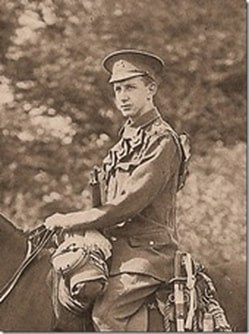
G/2513 Private
Frank Cameron
7th Bn. The Buffs (East Kent Regiment)
3rd May 1917, aged 34.
Plot I. E. 5.
Son of Kenneth and Jessie Cameron, of Londuth, Poolewe, Ross-shire; husband of Helen Watson Cameron, of 33, Marylebone Lane, Wigmore St., London.
His headstone bears the inscription "Gone But Not Forgotten Inserted By His Widow And Children"
Pictures courtesy of great nephew, Ewen Hardie
Frank Cameron
7th Bn. The Buffs (East Kent Regiment)
3rd May 1917, aged 34.
Plot I. E. 5.
Son of Kenneth and Jessie Cameron, of Londuth, Poolewe, Ross-shire; husband of Helen Watson Cameron, of 33, Marylebone Lane, Wigmore St., London.
His headstone bears the inscription "Gone But Not Forgotten Inserted By His Widow And Children"
Pictures courtesy of great nephew, Ewen Hardie
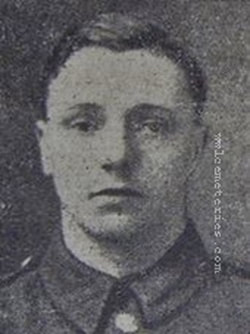
235246 Private
Richard Casey
2nd Bn. Suffolk Regiment
21st August 1918, aged 27.
Plot VI. L. 14.
Son of James and Sarah Casey, of Darwen; husband of Margaret Casey, of 113, Grey St., Burnley.
His headstone bears the inscription "In Loving Memory Of A Dear Husband And Father May His Reward Be As Great As His Sacrifice"
He left a widow and two children. Prior to enlisting he was employed at New Hall Spinning Mill, Burnley.
Second Lieutenant F. Bailey wrote to Richard's wife;
"Dear Madam, it is with deep regret that I have to inform you that your husband was killed in action during the operations of 21st August. He was hit by a snipers bullet in the stomach, and died immediately. His loss is greatly felt."
Richard Casey
2nd Bn. Suffolk Regiment
21st August 1918, aged 27.
Plot VI. L. 14.
Son of James and Sarah Casey, of Darwen; husband of Margaret Casey, of 113, Grey St., Burnley.
His headstone bears the inscription "In Loving Memory Of A Dear Husband And Father May His Reward Be As Great As His Sacrifice"
He left a widow and two children. Prior to enlisting he was employed at New Hall Spinning Mill, Burnley.
Second Lieutenant F. Bailey wrote to Richard's wife;
"Dear Madam, it is with deep regret that I have to inform you that your husband was killed in action during the operations of 21st August. He was hit by a snipers bullet in the stomach, and died immediately. His loss is greatly felt."
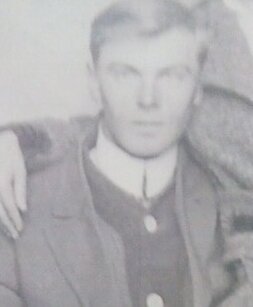
3180506 Private
Harold William Cochran
85th Bn. Canadian Infantry
28th September 1918, aged 23.
Plot IV. B. 14.
Son of George and Blanche Cochran, of Sweets Corner, Hants Co., Nova Scotia.
His headstone bears the inscription "Gone But Not Forgotten"
He died from head wounds he received in action, six weeks before the end of the war.
Picture courtesy of Beverley Phillips Shanks, a double first cousin once removed of Harold's.
Harold William Cochran
85th Bn. Canadian Infantry
28th September 1918, aged 23.
Plot IV. B. 14.
Son of George and Blanche Cochran, of Sweets Corner, Hants Co., Nova Scotia.
His headstone bears the inscription "Gone But Not Forgotten"
He died from head wounds he received in action, six weeks before the end of the war.
Picture courtesy of Beverley Phillips Shanks, a double first cousin once removed of Harold's.
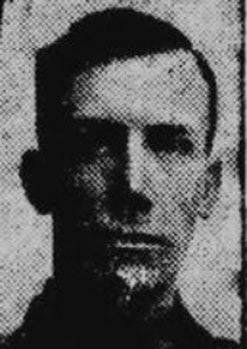
2nd Lieutenant
Herbert James Day
11th Squadron, Royal Flying Corps and Gloucestershire Regiment
8th August 1917, aged 30.
Plot I. K. 4.
Son of George and Eliza Day, of 27, Elizabeth St., Luton. Was in the retreat from Mons. Wounded three times.
His headstone bears the inscription "Angels Now Welcome Thee"
Herbert James Day
11th Squadron, Royal Flying Corps and Gloucestershire Regiment
8th August 1917, aged 30.
Plot I. K. 4.
Son of George and Eliza Day, of 27, Elizabeth St., Luton. Was in the retreat from Mons. Wounded three times.
His headstone bears the inscription "Angels Now Welcome Thee"
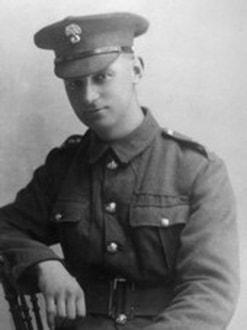
28945 Private
John Darley Denton
1st Bn. Grenadier Guards
27th March 1918.
Plot VI. F. 13.
Husband of Ethel Foyson Denton. Son of John Darley and A Denton of 173 Dean Road, Scarborough
Image courtesy of granddaughter Mrs M. Julie Taylor
John Darley Denton
1st Bn. Grenadier Guards
27th March 1918.
Plot VI. F. 13.
Husband of Ethel Foyson Denton. Son of John Darley and A Denton of 173 Dean Road, Scarborough
Image courtesy of granddaughter Mrs M. Julie Taylor
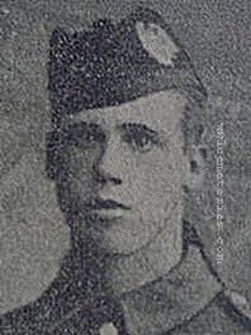
307985 Private
Herbert Dunkerley
15th Bn. Tank Corps.
21st August 1918, aged 21.
Plot VI. L. 22.
Son of Thomas and Margaret Ann Dunkerley, of 28, Rectory Rd., Burnley.
Formerly of the 10th Bn. Cameronians, (Scottish Rifles), Herbert later joined the Tank Corps in January 1918. Prior to enlisting he was a weaver at Slater's Mill, Calder-Vale Road, Burnley.
Shortly after his death, Herbert's parents received the following letter from one of his friends at the front;
"I have had many an hour with him out here, he was buried along with two more of the Tank Corps.
I will plant something on his grave in the course of a day or two, which I might say, is in a village about four miles from -------. I know it must be a hard blow to you all at home. I cannot express my feelings towards you on paper."
Yours sincerely
E. Beardsworth
Herbert Dunkerley
15th Bn. Tank Corps.
21st August 1918, aged 21.
Plot VI. L. 22.
Son of Thomas and Margaret Ann Dunkerley, of 28, Rectory Rd., Burnley.
Formerly of the 10th Bn. Cameronians, (Scottish Rifles), Herbert later joined the Tank Corps in January 1918. Prior to enlisting he was a weaver at Slater's Mill, Calder-Vale Road, Burnley.
Shortly after his death, Herbert's parents received the following letter from one of his friends at the front;
"I have had many an hour with him out here, he was buried along with two more of the Tank Corps.
I will plant something on his grave in the course of a day or two, which I might say, is in a village about four miles from -------. I know it must be a hard blow to you all at home. I cannot express my feelings towards you on paper."
Yours sincerely
E. Beardsworth
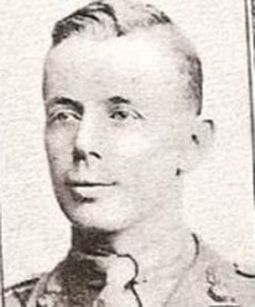
Lieutenant
Harold Elsworth
4th Bn. Royal Scots Fusiliers
21st August 1918, aged 26.
Plot VI. K. 24.
Son of Henry and Mary Louisa Elsworth, of Iris Villa, Scholes, Leeds.
Harold Elsworth
4th Bn. Royal Scots Fusiliers
21st August 1918, aged 26.
Plot VI. K. 24.
Son of Henry and Mary Louisa Elsworth, of Iris Villa, Scholes, Leeds.
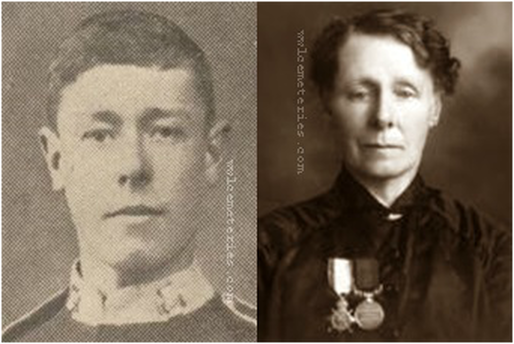
8829 Corporal
Herbert Wolton Fox, D. C. M.
2nd Bn. Wiltshire Regiment
9th April 1917, aged 22.
Special Memorial 17.
Son of Mrs. A. E. Fox, of Great Ryburgh, Fakenham, Norfolk. Nephew of Mr and Mrs G. L. Smith of the Bath Arms, Kingsmead Street, Bath.
His headstone bears the inscription "Their Glory Shall Not Be Blotted Out"
The above pictures show Herbert and also his mother wearing his DCM along with the 1914/15 Star.
Herbert was one of 3 children born to Harry and Annie Fox, he was baptised in Ryburgh on May 26th 1895 although at that time they were living in Fulmodeston. It is believed they moved to Ryburgh around 1900 living near the school in the area where 58-64 Station Road are today. His father died in 1901 at the age of 35. Some time later Herbert moved to Cirencester to live with his Aunt Harriet. According to the Census of 1911 he was employed as an under-gardener domestic. A regular soldier on the outbreak of war his regiment the 2nd Battalion Wiltshire Regiment were stationed in Gibraltar. They were mobilised on the 29th July 1914, arriving Southampton on the 3rd September 1914. Attached 21st Brigade 7th Div they landed at Zeebrugge on the 6th October 1914. They were immediately in action in the defence of Antwerp; falling back from there they became entrenched at Reutel east of Ypres in Belgium where they took part in the First Battle of Ypres. 1915 saw them in Fleurbaix , their next action would be at Neuve Chappelle. Their last action that year was at Loos, famous for the fact that the Queen`s uncle Fergus was killed there. 1916 found them in the Amiens area but by July 1st the opening day of the Battle of the Somme they were fighting in support at Montauban, in Trones Wood they `bayoneted their way through German lines`. This action led to the award of no less than 23 gallantry awards. Herbert himself was later awarded the `Distinguished Conduct Medal` (DCM) on the 28th July, his citation read: 8829 L/Cpl H. W. Fox Wilts Regt. (sic) `For conspicuous gallantry and resource as a telephone linesman. On several occasions during bombardments previous to an assault he kept up telephone communications and repaired and maintained lines under the heaviest shell fire. His services were invaluable, and he always performed his work with coolness and courage under the most dangerous conditions`. 1917 his regt. were still in France for the first 3 months leading up to opening day of the Battle of Arras which commenced on the 9th April the day of Herbert’s death. On that fateful day the Wilts attacked the Hindenburg line with only a few reaching their objective owing to the barbed wire still being undamaged, a sadly familiar story. It is worth noting that in all these 3 years he had only been home on leave once!
Herbert is not only commemorated at Bucquoy Road, but also the Ryburgh War Memorial and Ryburgh Memorial Hall and on the 3rd panel at Cirencester.
Above information courtesy of Ryburgh Remembers
His mother received the following letter from 2nd Lieutenant W. R. Wood, O. C. of ‘A’ Company, 2nd Wiltshires:
‘It is with great regret that I am writing to inform you of the death of your son, No. 8829 Cpl. Fox, H.
He was killed in action on 9 April 1917 during an attack on an enemy position. I can hardly express in words the sympathy which I feel for you in your great trouble but I hope that it will comfort you to know that he always did his duty and set a fine example to everyone around him both by his devotion to duty and great courage under fire. His loss will be a great loss to the regiment and I may say the Army ...
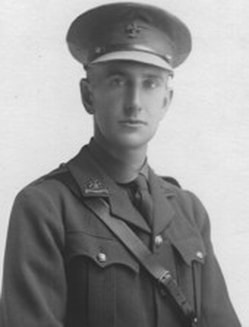
Second Lieutenant
Harry Mitchell
7th Bn. Manchester Regiment
28th September 1918.
Plot II. H. 21.
He was married to Ethel Mitchell (nee Slater) and lived in Oldham. They had two sons Harry Ensor, and my father George Kenneth. George was born 3 months after the death of his father.
Harry wrote some beautiful love letters to my Grandmother, the most poignant being the final letter saying what was planned and that he was confident that all would be well.
I have the telegram that my Grandmother received and the final cheque that she received from my grandfather, which arrived after his death but which she felt she could not cash in.
Picture courtesy of Cassandra Gouriet, Lt. Mitchell's granddaughter
Harry Mitchell
7th Bn. Manchester Regiment
28th September 1918.
Plot II. H. 21.
He was married to Ethel Mitchell (nee Slater) and lived in Oldham. They had two sons Harry Ensor, and my father George Kenneth. George was born 3 months after the death of his father.
Harry wrote some beautiful love letters to my Grandmother, the most poignant being the final letter saying what was planned and that he was confident that all would be well.
I have the telegram that my Grandmother received and the final cheque that she received from my grandfather, which arrived after his death but which she felt she could not cash in.
Picture courtesy of Cassandra Gouriet, Lt. Mitchell's granddaughter
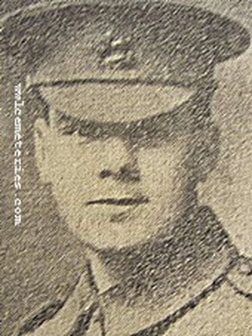
51771 Private
John Thomas Proctor
19th Bn. The King's (Liverpool Regiment)
9th April 1917, aged 29.
Plot VI. P. 30.
Son of Matthew and Mary Ann Proctor, of 3, Lydia St., Burnley.
Twice wounded and once gassed, he was the oldest of six sons and one daughter. Prior to enlisting he was a weaver at Proctor's Mill, Stoneyholme.
John Thomas Proctor
19th Bn. The King's (Liverpool Regiment)
9th April 1917, aged 29.
Plot VI. P. 30.
Son of Matthew and Mary Ann Proctor, of 3, Lydia St., Burnley.
Twice wounded and once gassed, he was the oldest of six sons and one daughter. Prior to enlisting he was a weaver at Proctor's Mill, Stoneyholme.
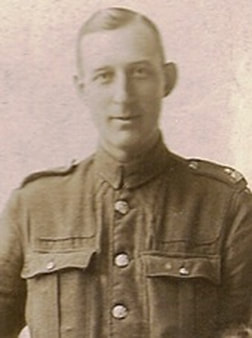
59472 Private
Marmaduke William Smith
26th (Tyneside Irish) Bn. Northumberland Fusiliers
21st December 1917, aged 36.
Plot II. C. 17.
Son of the late Joseph and Eleanor Smith; husband of Eva May Smith, of 12, St. Thomas St., Newcastle-on-Tyne.
All pictures courtesy of Ben McNiff
Marmaduke William Smith
26th (Tyneside Irish) Bn. Northumberland Fusiliers
21st December 1917, aged 36.
Plot II. C. 17.
Son of the late Joseph and Eleanor Smith; husband of Eva May Smith, of 12, St. Thomas St., Newcastle-on-Tyne.
All pictures courtesy of Ben McNiff
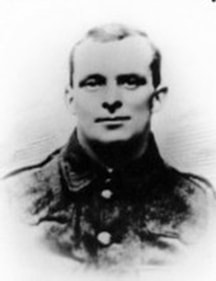
325363 Private
Joseph Wilkinson Tunstall
9th Bn. Durham Light Infantry
6th September 1917, aged 32.
Plot I. L. 2.
Son of William and Alice Tunstall; husband of Elizabeth McNaughton (formerly Tunstall), of High Spen, Rowlands Hill, Co. Durham. Native of Greenside, Ryton.
Picture courtesy of Alan Tunstall
Joseph Wilkinson Tunstall
9th Bn. Durham Light Infantry
6th September 1917, aged 32.
Plot I. L. 2.
Son of William and Alice Tunstall; husband of Elizabeth McNaughton (formerly Tunstall), of High Spen, Rowlands Hill, Co. Durham. Native of Greenside, Ryton.
Picture courtesy of Alan Tunstall
Shot at Dawn
46127 Private Ernest Horler, 12th Bn. West Yorkshire Regiment (Prince of Wales's Own) executed for desertion 17th February 1918, aged 26. Plot II. L. 14.
He enlisted on 23 May 1916. On 25 July 1917, Horler was briefly absent from his unit; on 28 July, he was sentenced for escaping & absence to 2 years’ imprisonment with hard labour, which was commuted to 90 days’ Field Punishment No l.
On 3 Dec (when he was serving his latest sentence), his company was paraded for wiring work in the support line, but Horler was missing. Next day, he surrendered himself at Boulogne.
On 14 Dec, at Etaples ,Horler escaped from the draft of men being returned to the front, & was found — again in Boulogne — by the RMP on 12 Jan 1918, & arrested. He had no pass, no pay-book or ID disc. It turned out that his whereabouts had been traced through letters he had sent to his mother, which she had passed on to the authorities.
At trial, the evidence on the charge of desertion was not contested, but Horler said on oath that he had been seriously sick for many months, but had always done his duty in the line & out. On 3 Dec he had left because his condition was worsening, & not knowing that the wiring party was to go into the support line that night.
As to his escape, he made an unsworn statement. He admitted going absent from the draft, & said that he had lost his pay-book & ID disc in the camp at Etaples. He denied an intention to desert.
In mitigation, Horler spoke of his ‘fine character’ before he joined up; complained that his pay was in serious arrears, & said that he had an aged mother to support; averred that his illness had told against him all the time & sought a medical board to examine his physical & mental health.
After trial, the battalion MO reported that Horler had been seen on 5 occasions, but nothing serious was noted, while a divisional doctor found ‘no appreciable disease’.
Horler’s CO stated that Horler had seen action only once & ‘most of his time had been spent under arrest or as an absentee’. The Divisional commander wrote that Horler ‘appears to be a worthless man who has continuously endeavoured to evade service’ — a view seemingly accepted thereafter. (Corns, pp.248-250)
45688 Private John B. Milburn, 24th/27th (Tyneside Irish) Bn. Northumberland Fusiliers, executed for desertion 8th November 1917. Plot II. C. 8. He had served for 2 years after enlistment & was under a suspended sentence of 2 years’ imprisonment when in the trenches opposite the Hindenburg Line he opted out of operations with a self-inflicted wound. (Putkowski, pp 214-216)
46127 Private Ernest Horler, 12th Bn. West Yorkshire Regiment (Prince of Wales's Own) executed for desertion 17th February 1918, aged 26. Plot II. L. 14.
He enlisted on 23 May 1916. On 25 July 1917, Horler was briefly absent from his unit; on 28 July, he was sentenced for escaping & absence to 2 years’ imprisonment with hard labour, which was commuted to 90 days’ Field Punishment No l.
On 3 Dec (when he was serving his latest sentence), his company was paraded for wiring work in the support line, but Horler was missing. Next day, he surrendered himself at Boulogne.
On 14 Dec, at Etaples ,Horler escaped from the draft of men being returned to the front, & was found — again in Boulogne — by the RMP on 12 Jan 1918, & arrested. He had no pass, no pay-book or ID disc. It turned out that his whereabouts had been traced through letters he had sent to his mother, which she had passed on to the authorities.
At trial, the evidence on the charge of desertion was not contested, but Horler said on oath that he had been seriously sick for many months, but had always done his duty in the line & out. On 3 Dec he had left because his condition was worsening, & not knowing that the wiring party was to go into the support line that night.
As to his escape, he made an unsworn statement. He admitted going absent from the draft, & said that he had lost his pay-book & ID disc in the camp at Etaples. He denied an intention to desert.
In mitigation, Horler spoke of his ‘fine character’ before he joined up; complained that his pay was in serious arrears, & said that he had an aged mother to support; averred that his illness had told against him all the time & sought a medical board to examine his physical & mental health.
After trial, the battalion MO reported that Horler had been seen on 5 occasions, but nothing serious was noted, while a divisional doctor found ‘no appreciable disease’.
Horler’s CO stated that Horler had seen action only once & ‘most of his time had been spent under arrest or as an absentee’. The Divisional commander wrote that Horler ‘appears to be a worthless man who has continuously endeavoured to evade service’ — a view seemingly accepted thereafter. (Corns, pp.248-250)
45688 Private John B. Milburn, 24th/27th (Tyneside Irish) Bn. Northumberland Fusiliers, executed for desertion 8th November 1917. Plot II. C. 8. He had served for 2 years after enlistment & was under a suspended sentence of 2 years’ imprisonment when in the trenches opposite the Hindenburg Line he opted out of operations with a self-inflicted wound. (Putkowski, pp 214-216)

